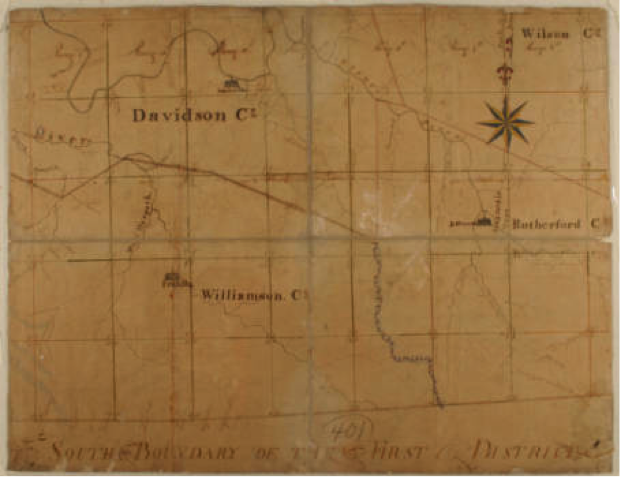— post by Susan London-Sherer, Historical Archaeology/Historic Preservation Graduate Intern
Although the timeline related to the road that we exposed in our excavation unit remains uncertain, the research that I have been doing related to it has been fascinating. We now know that a road from James Allison’s property was ordered by the court, and that local men were appointed to build this road from 1807 to 1809. We cannot be certain yet that the road in our unit is indeed part of this particular court-ordered road. So, it is necessary to investigate further, to consider other avenues…take a detour, so to speak, into alternate possibilities.
If you will remember back to my last blog post, I wrote about the uniform-sized rock that my colleagues diligently shoveled and screened for days. In researching early road construction, and in discussion with Co-Director Jesse Tune, we came up with an interesting concept that just might apply to the road in our excavation unit, and place a slightly later date on our road.

Map of the First Surveyor’s District of Tennessee, circa 1807-1808
Digital Image © 2008, Tennessee State Library & Archives.
We came across the name John Loudon McAdam, a Scottish engineer, who developed a new system for road construction in 1820. The size and weight of each stone was the most important element of McAdam’s technique. Men sat with small hammers and carefully broke up rocks into different sizes, which were then laid in layers with the largest on the bottom and the smallest on the top. The largest stones, which comprised the bottom 7.9 inches of road surface, were to be no bigger than three inches in diameter. The top two inches of the road consisted of stones no larger than .79 inches in diameter. The road building crew was under strict supervision and the size and weight of their rocks could be checked in a variety of ways.
Sometimes road crew supervisors carried scales with them and made sure the rocks did not exceed a maximum weight of six ounces. If no scale was available, sometimes supervisors carried metal rings that each rock had to pass through to certify its size. The road crew also had a third option of guaranteeing the size of their rocks. If they were able to fit the rock inside their mouths, then it was approved to go on the roadway. McAdam’s technique also required that the men lay the road one careful shovelful at a time.

Workers break up rocks for a McAdam’s road.
This is where the term “macadam” road surface comes from.
Photo courtesy of wikipidia.com
If indeed, our road dates to a later time period, specifically after the first macadam roads were constructed in the United States in 1823, a whole new set of questions begs to be answered. Where exactly were the early residents of Allisona going? What kinds of places did they want, or need to visit when they traveled along this road? What kinds of businesses developed in the region due to the construction of the road and the access it provided to the settlers?
As you can see, with each day that passes at the Magnolia Valley site, and with each new discovery that we unearth, our research questions take on new shapes and dimensions. The more ways that we can confirm human activity on the landscape, the more significant our research becomes. This journey began when a revealing snapshot of something that “looks like a road” was discovered in the data from our initial geophysical survey. The road was later confirmed through the controlled excavation of a two-meter by two-meter excavation unit laid out on a grid with the same coordinates as the geophysical survey. The historical document research revealed a contemporary road-building technique that appears to back up the description of the uniform-sized rocks that covered the road in our unit. In this case, the detour that I took on the road to discovery led me on a quest to a precious hidden gem of knowledge.
